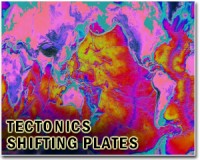| . |  |
. |
Canberra, Australia (UPI) Apr 11, 2011 Australian researchers, with European colleagues, have confirmed a formerly purely theoretical geologic phenomenon and have given it a name -- yo-yo subduction. The conventional view of subduction -- in which Earth's crust is pushed down into the planet's interior in the convergence of tectonic plates -- is that it happens only once and in one direction, Daniela Rubatto at the Australian National University Research School of Earth Sciences says. "The typical idea is that the convergence of plates creates a force that pushes rocks down from the surface of the Earth making the whole system move down like a conveyor belt," she says. "Most of the material will sink forever in the planet's mantle and only a fraction will make it back to the surface." Rubatto and colleagues at the University of Bern and University of Torino say that's not necessarily the case, PhysOrg.com reported Monday. "However, we have now determined that the Earth's crust is pushed down from the planet's surface to a depth of 60 to 100 km (40 to 60 miles), comes back towards the Earth's surface, is pushed down again and then finally ends up back on the surface where it becomes part of mountain belts." Within a subduction zone, Rubatto says, "individual rock units move independently, faster and in a more complex way: they go down and up and down again and up again, like a yo-yo." Rubatto compares the findings of subduction movement to having a flight recorder giving details of an airliner's route. "So far we have known where the plane started, that it had a stopover, and finally landed at its destination," she says. "Now we can read the actual route of the plane, how fast it went, and how long it took -- and find out that it went to a destination twice."
Share This Article With Planet Earth
Related Links Tectonic Science and News
 New theory of Tibet geology put forward
New theory of Tibet geology put forwardPasadena, Calif. (UPI) Apr 6, 2011 U.S. researchers say they have a new theory of the geology underlying the Tibetan plateau, long thought to be floating on a hot crust moving like a liquid. "The idea that Tibet is more or less floating on a layer of partially molten crust is accepted in the research community," Jean-Philippe Avouac, professor of geology at the California Institute of Technology said. "Our research propo ... read more |
|
| The content herein, unless otherwise known to be public domain, are Copyright 1995-2010 - SpaceDaily. AFP and UPI Wire Stories are copyright Agence France-Presse and United Press International. ESA Portal Reports are copyright European Space Agency. All NASA sourced material is public domain. Additional copyrights may apply in whole or part to other bona fide parties. Advertising does not imply endorsement,agreement or approval of any opinions, statements or information provided by SpaceDaily on any Web page published or hosted by SpaceDaily. Privacy Statement |